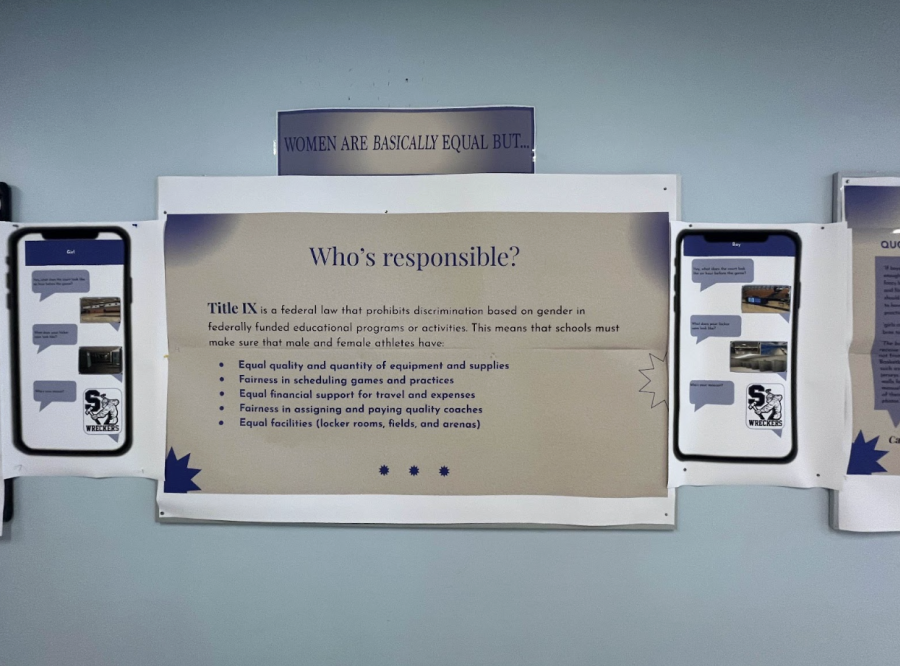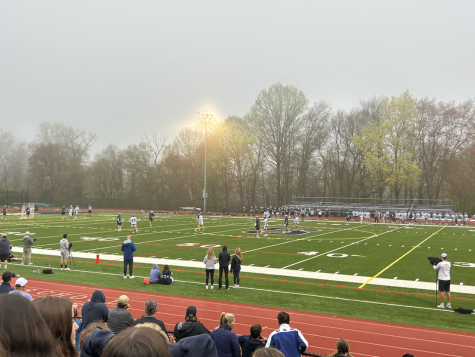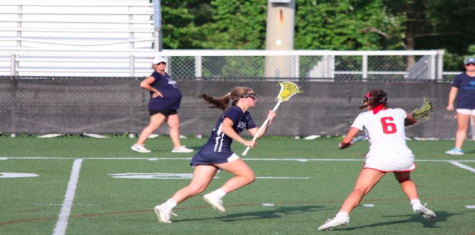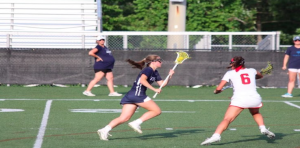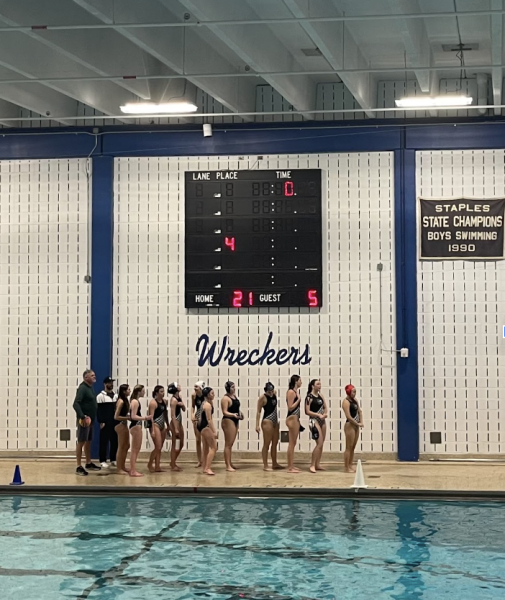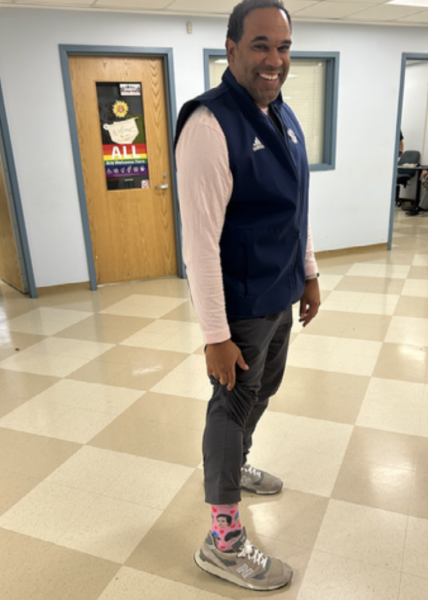Title IX project prompts concerns, responses over athletic equality
Cathy Schager’s Women in History class has created a bulletin board as part of an activism project to spread awareness of discrepancies between female and male athletics at Staples. The project has gotten the attention of prominent figures at Staples, including the Athletic Director who is working on a solution.
It’s moments before the big game. The football team huddles in their personal locker room, equipped with a vast common room, energizing table games and their gigantic decorated lockers. Just a few steps across the hall, another locker room lies. This one, however, is jam packed with almost every team, dilapidated showers and not even a sliver of natural light.
Nearly 50 years after the momentous Title IX was signed into law, female athletes continue to lack a level of funding and recognition like many of the boys’ teams.
“I think there is a lack of understanding on how to support [female] teams monetarily as well as how to give them the social support,” former lacrosse coach and social studies teacher Cathy Schager said. “There’s just a lot of ways the inequity exists, such as referring to female teams as Lady Wreckers.”
Because of Schager and Athletic Director VJ Sarullo, female sports are finally beginning to receive their much needed recognition. Following years of complaints regarding funding discrepancies yet little action, girls in Schager’s Women in Society class created a bulletin board showcasing athletic disparities within Staples.
I think there is a lack of understanding on how to support [female] teams monetarily as well as how to give them the social support,
— Cathy Schager
The board features several areas of discrepancies, notably the lack of renovated locker rooms, the seemingly masculine logo and some essential figures in the women’s rights movement.
“[Some students] decided they wanted to do Title IX [for a project] so finally at the very end of the class the students decided to come together and create the bulletin boards,” Schager said. “I feel like it was a few years coming because a few different years of students have worked on it.”
Sarullo has recognized the concerns of the many female athletes and has praised the work of the Women in Society class. He hopes to keep partnering with students to foster an inclusive community for all athletes.
“I think the [bulletin board] is outstanding,” Sarullo said. “We are at the anniversary of Title IX and everything that we can do to promote equality in our sports programs is awesome.”
Of course, speaking of equity only gets the athletic department so far. To truly implement proposed changes, students must weigh in on potential improvements.
“We have a scoreboard that is almost dysfunctional,” girls’ swim team member Sophia Lomnitz ’24 said. “I think there should be a budget to improve aspects of all sports, not just the really popular ones.”
It is the role of the Athletic Director to ensure every student athlete at Staples feels represented, whether they be on the water polo team or the cheer team. With the input of a diverse array of student athletes, Sarullo has developed a plan to create a student committee for captains to discuss changes they would like to see implemented.
“Our Captains Council will be all the leaders of our teams,” Sarullo said. “We will start meeting within the first couple months of school and [gender equality] will be one of the things we will discuss.”
Ultimately, if female sports are to receive the same support and money as male sports, systemic efforts must be made at the school level to expand their popularity.
“We must ask ourselves what does it mean to be supportive of everybody,” Schager said. “We should look at how much money has gone into a program and ultimately ask ourselves how we want to be as a school.”

Caitlin Jacob ’24 was initially drawn to Advanced Journalism and Inklings because of the class’s uniqueness.
“I love writing in general,” Jacob...












































